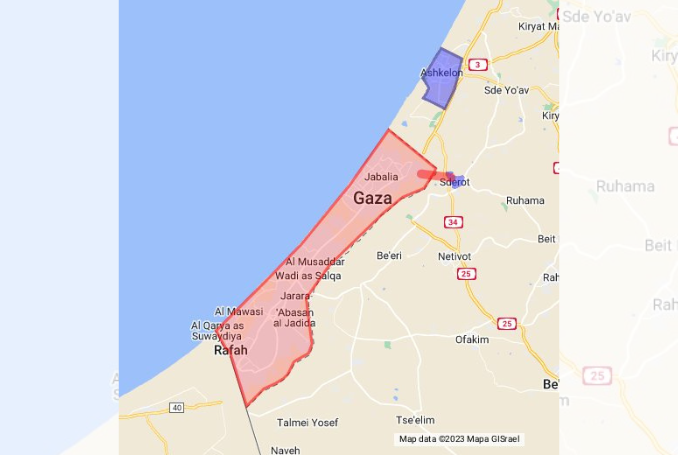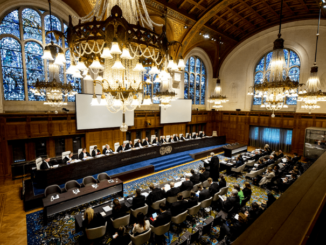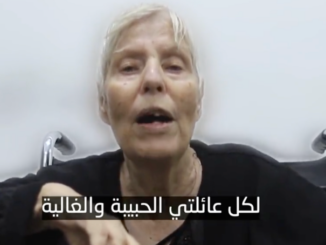
By Palestine Chronicle Editors
Recent events have demonstrated that Israel has completely failed in marginalizing or isolating Gaza.
The importance of Gaza to the Palestinian struggle is neither economic nor political per se, but because, as Palestinian author and historian Ramzy Baroud put it, “it represents the heart of the Palestinian Resistance.”
Baroud had repeatedly argued in the past that Gaza’s power stems from its ability to disturb Israeli strategies, whether in Palestine or, as of late, in the entire Middle East.
In a recent video, Baroud opined that “tiny little Gaza” is perhaps the most important geopolitical entity in the Middle East, and possibly the world right now.
Below, the Palestine Chronicle provides some essential information about Gaza, which has managed to create some kind of a military balance against the once powerful Israeli army – a feat that has not been accomplished by several standing Arab armies combined.
History
The history of Gaza spans four millennia. It was inhabited and ruled by many powers, destroyed and repopulated by various dynasties and empires, including Egyptian Pharaohs, Babylonians, Philistines, and Alexander the Great, who besieged and captured it, after several major attempts, in 332 BCE.
The population of Gaza has inherited this legacy of resistance, which continues to this day.
- Rebuilt by the Romans, it was ruled, starting in 637 CE, by the Muslim General Amr ibn al-As, when most Gazans adopted Islam as their religion. The Crusaders tried to invade it in the 12th century but were driven out by Salah ad-Din (Saladin). In the 16th century, it lived a golden age under the Ottoman-appointed Ridwan dynasty.
- During World War I, it was captured by British forces.
- The population rapidly grew following the Nakba, in 1948, when hundreds of thousands of Palestinian refugees were ethnically cleansed by Zionist militias following the establishment of Israel atop the ruins of historic Palestine.
- Gaza became the center of political activism during the First Intifada, the uprising of 1987.
- Following the signing of the Oslo Accords in 1993, it was put under the control of the newly established Palestinian Authority. In 2005, Israeli forces, which had occupied it since 1967, decided to redeploy, imposing a siege on the Strip from all directions, and from land, air and sea.
- In 2007, the Palestinian movement Hamas won the democratic election. Their win was not recognized by the United States and Israel. It was then that Gaza was placed under even a more hermetic siege, which also involved Egypt, at the behest of Washington.
- Major Israeli wars and numerous other bombing campaigns were launched against Gaza, most notably in 2008-09, 2012, 2014, 2021, and most recently, on October 7, 2023.
Through Artistic Sweets, Palestinians Celebrate Archeological Sites in Gaza (PHOTOS)
Geography
Gaza is a very small territory that is home to over 2.3 million people. It is approximately 365 square kilometers in size (circa 141 sq miles).
- The Gaza Strip borders the Mediterranean Sea, Egypt and Israel.
- It is situated on a relatively flat coastal plain.
- The climate is temperate. In Gaza, summers are long, warm, and arid, while winters are cool and mostly clear.
Demographics
Gaza has an extremely high population density of over 500 people per 100 sq meters in some areas.
- The population is almost entirely Palestinian Arab.
- The vast majority of the population is Sunni Muslim, with a small Christian minority divided into Orthodox and Catholics.
Photo Gallery: Gaza’s Greek Orthodox Community Celebrates Christmas
- Children are nearly half of Gaza’s population.
Siege
In June 2007, following the electoral victory of the Palestinian movement Hamas, Israel, with the help of Egypt, sealed the Strip, denying its population freedom of movement, access to badly needed medications, or enough food supplies.
Durra’s Memory will Never Fade: Children of Gaza Protest Israeli Siege – PHOTO GALLERY
Since then, Gaza had access to about 4-8 hours of electricity per day, due to the lack of fuel.
- In 2005, Israel had already imposed restrictions on Gaza, particularly on the movement of goods and people.
- In 2006, the Karni crossing (or Al-Mintar), which was the only crossing for exports of goods, was closed.
- Since 2007, Israel has maintained a land, air and sea blockade on Gaza that has had a devastating effect on the Palestinian population in the Strip.
Wars
Israel conducted several major wars on Gaza.
- 2008-09: The so-called ‘Operation Cast Lead’, named Battle of al-Furqan in Gaza, was a three-week Israeli military operation that began on December 27, 2008. It ended on January 18, 2008, with a unilateral ceasefire. The continuous airstrikes, artillery shelling and ground operations resulted in the killing of 1,383 Palestinians, including 333 children and 114 women, and the injury of over 5,300.
- 2012: The ‘Operation Pillar of Defense’, named Operation Stones of Baked Clay in Gaza, was an eight-day Israeli military operation that began on November 14, 2012. According to United Nations figures, 174 Palestinians were killed, including 47 children.
- 2014: The ‘Operation Protective Edge’, was an Israeli military operation that began on July 8, 2014. More than 2,000 Palestinians, including 500 children, were killed.
- 2021: The ‘Sword of Jerusalem’ was an 11-day Israeli-Palestinian war that started on May 10, 2021. This time, it was initiated by the Resistance in Gaza, in retaliation to Israeli violations and violence against Palestinian communities in occupied East Jerusalem. The war killed over 260 Palestinians, including 67 children.
- Many other minor, although still deadly, wars were carried out by Israel against Palestinians in the Strip, killing and wounding hundreds.
Israel has hoped to isolate Gaza, not only from the world, but also from its regional and even Palestinian political environs.
Recent events have demonstrated that Israel has completely failed in marginalizing or isolating Gaza.
‘Tiny, little Gaza’, has indeed demonstrated that by being the beating heart of Palestinian Resistance, it is the spearhead of a Palestinian fight for liberation that has extended over the course of 75 years.
(The Palestine Chronicle)








In 1999 oil was discovered off the coast. In 2000, Israel announced it could not be developed because the proceeds might go for weapons. Ever since, Israel has been trying to drive the Palestinians out so Israel can steal tge gaza land and the oil and gas.